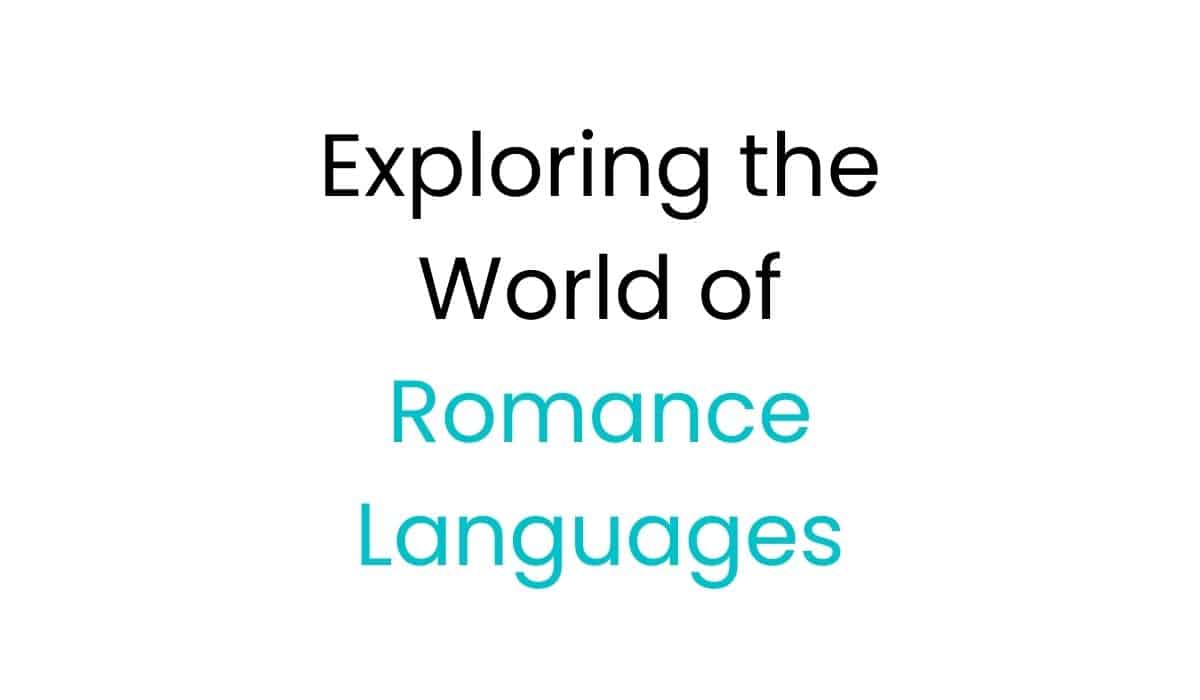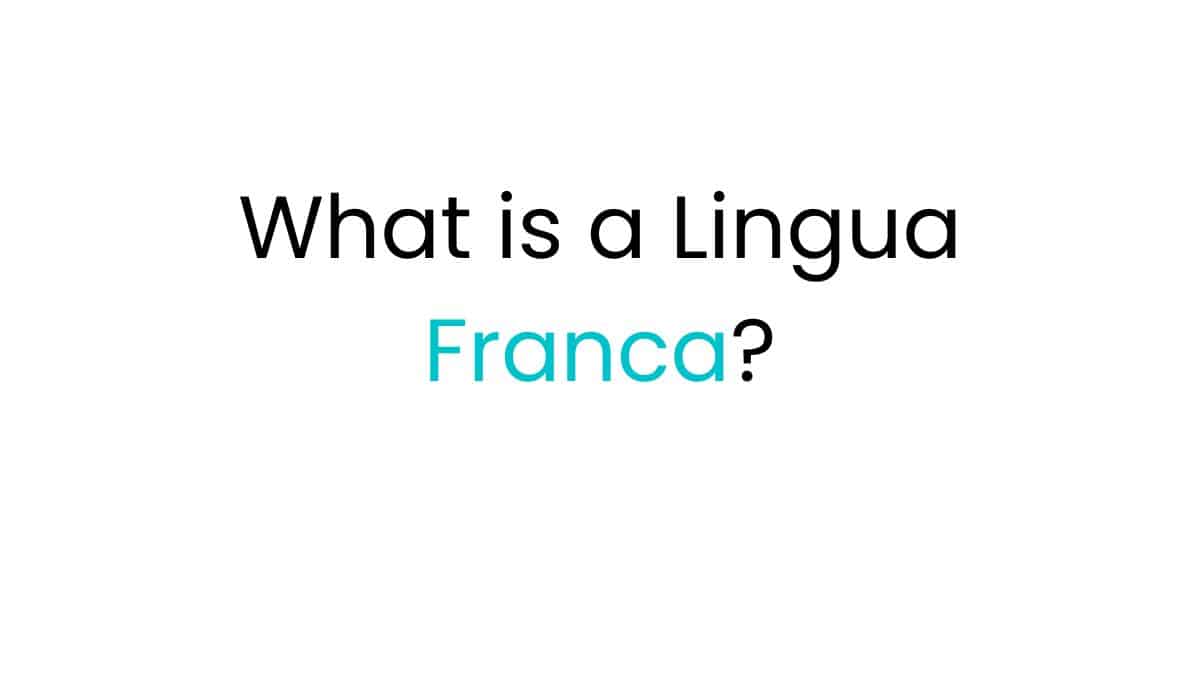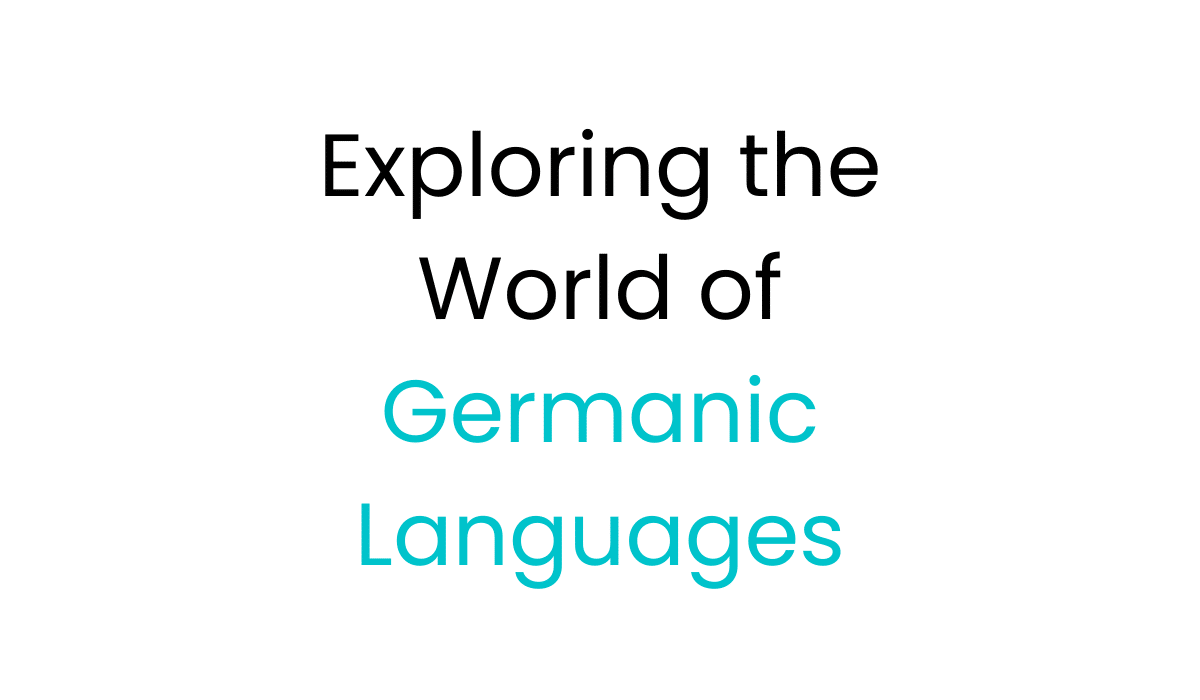German and Dutch are close cousins in the language world. They both belong to the West Germanic family, just like English. While they look and sound similar, they have their own unique traits. This article will dive into the differences in language, culture, and everyday use of German and Dutch. It aims to give readers a clear view of what makes each language special.
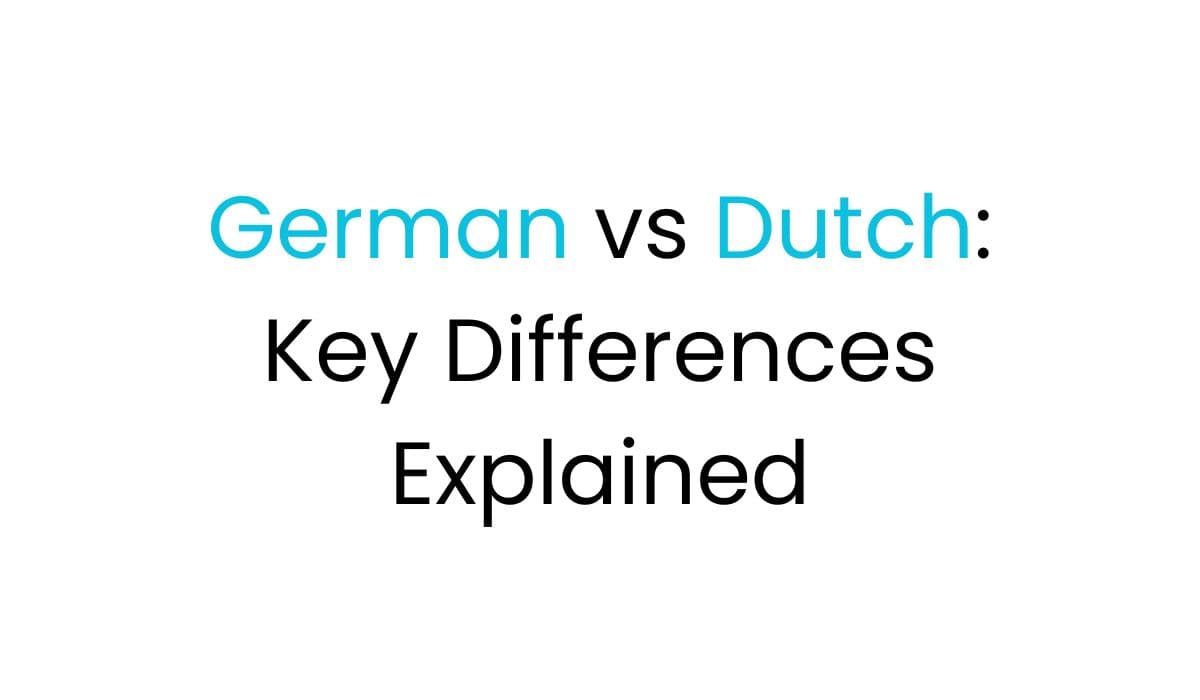
Key Takeaways
- German and Dutch are both West Germanic languages, but have evolved differently over time.
- Dutch has become more simplified compared to the more complex German grammar.
- Dutch and German share similar basic words, but have different pronunciation and sentence structures.
- Despite their similarities, it can be challenging for Dutch and German speakers to understand each other due to the differences in their languages.
- The cultural and work-related differences between Germany and the Netherlands also contribute to the distinct characteristics of the two languages.
- Key Takeaways
- Linguistic Origins and Similarities
- The High German Consonant Shift
- Grammatical Complexity
- Linguistic Differences
- Communication Styles
- Economic Factors
- Infrastructure and Amenities
- Importance of Time Management
- German Cuisine: Hearty and Filling
- Dutch Cuisine: Seafood and Dairy Delights
- What are the key linguistic differences between German and Dutch?
- How do the vocabularies of German and Dutch differ?
- What are the main grammatical differences between German and Dutch?
- How do the spelling and pronunciation of German and Dutch words differ?
- What are the key cultural differences between Germany and the Netherlands?
- How do the work cultures in Germany and the Netherlands differ?
- What are the main differences in punctuality norms between Germany and the Netherlands?
- How do the culinary traditions of Germany and the Netherlands differ?
The German and Dutch Languages
German and Dutch are close cousins in the language world. They both belong to the West Germanic family. They share a common history and many words and grammar rules. But, German changed a lot between the 3rd and 8th centuries with the High German Consonant Shift. This change made German different from Dutch and other West Germanic languages.
Linguistic Origins and Similarities
The West Germanic family includes German, Dutch, English, Afrikaans, Yiddish, and Frisian, among others. These languages are related and have many similar words. In fact, they are as similar as Spanish and Italian, with about 60% of their words being the same.
The High German Consonant Shift
The High German Consonant Shift changed how certain consonants sounded in German. This change made German and Dutch vocabulary different. For instance, the word for “water” is Wasser in German but water in Dutch.
German grammar is often seen as more complex, with four cases and three articles. But, Dutch grammar is simpler for many learners. Dutch words are also closer to English than German, making it easier for English speakers to learn.
Vocabulary Differences
German and Dutch share a lot of words, but they also have differences. A big difference is the impact of Latin on English. This has made English have more Latin-derived words than German and Dutch.
The Norman conquest of England in 1066 changed things. French, which was heavily influenced by Latin, became common in the royal court, church, and legal system. So, many French words came into English. German and Dutch, however, kept more of their original Germanic vocabulary.
| Language | Latin-Derived Words | Germanic Vocabulary |
|---|---|---|
| English | High | Moderate |
| German | Moderate | High |
| Dutch | Low | High |
So, Dutch and German have fewer words replaced by Latin-based ones than English. Also, Dutch has more in common with English vocabulary than German does. The two languages share more words.
The linguistic influence and language borrowing have caused these vocabulary differences between German, Dutch, and English. These differences shape the unique features of each language.
German vs Dutch
German and Dutch languages are similar in grammar but also have big differences. These differences can make it hard for learners to move from one to the other. Both languages use the subject-verb-object (SVO) order in simple sentences. But, German grammar is usually more complex.
Grammatical Complexity
German has four cases (nominative, genitive, dative, and accusative) and three genders. It also has more complex verb forms. Dutch, on the other hand, has only two cases and simpler verbs.
Linguistic Differences
- German’s grammar includes a richer case system, with the genitive and dative cases being more important.
- German nouns have three genders, while Dutch has only two.
- German verbs have more complex forms, with different ones for each person and number. It also uses auxiliary verbs in complex tenses.
- Dutch grammar has become simpler over time, making it easier for those learning it.
These differences can make learning German and Dutch hard, especially with nouns and verbs. But knowing these can help learners understand the differences better.
| Grammatical Feature | German | Dutch |
|---|---|---|
| Cases | 4 (nominative, genitive, dative, accusative) | 2 (nominative, accusative) |
| Genders | 3 (masculine, feminine, neuter) | 2 (common, neuter) |
| Verb Conjugation | More complex, with distinct forms for each person and number | More straightforward, with fewer variations |
Spelling and Pronunciation Contrasts
German and Dutch may look and sound similar, but their spelling and pronunciation are quite different. German has long words and umlauts, which can confuse beginners. Dutch uses strange letter mixes and lots of vowels. Also, the “g” sound is pronounced differently in each language.
This makes it hard for speakers of one language to understand the other, even if they share many words. For example, Dutch and English are similar but Dutch has its own rules like guttural sounds and unique vowels. These can be tough for English speakers or those familiar with English.
Dutch and German also have different spelling rules. Dutch doesn’t allow double letters at the end of words, unlike German. Also, Dutch plurals are usually simple, ending in -en or -s. German nouns have more complex declensions.
| Linguistic Feature | German | Dutch |
|---|---|---|
| Genders | Three (masculine, feminine, neuter) | Two (common, neuter) |
| Plurals | Varied declensions | Typically end in -en or -s |
| Spelling Rules | Capitalization of nouns, double letters in words | No double letters at the end of non-loan words |
| Pronunciation | Umlauts, guttural “g” sound | Unique vowel sounds, guttural “g” sound |
These differences in spelling and pronunciation can be a challenge for learners. However knowing them can help bridge the gap and improve communication between German and Dutch speakers.
Cultural Divergences
Germany and the Netherlands are close neighbors with many cultural similarities. Yet, they have differences in how they talk and interact with each other. The Dutch often use polite and indirect language, while Germans speak more directly and honestly.
Communication Styles
These differences can cause misunderstandings, especially at work. The Dutch aim for harmony and avoid conflict. Germans, on the other hand, value efficiency and straight-to-the-point communication. This can make the Dutch see German directness as rude, and Germans might think the Dutch are unclear.
- Dutch communication is often indirect and focused on preserving relationships.
- German communication is typically more direct and task-oriented.
- Misunderstandings can arise due to these contrasting communication styles.
- Interpersonal interaction patterns differ between the two cultures.
- Cultural nuances in communication can impact cross-cultural collaboration and teamwork.
Knowing about these differences in communication is key for working well together across cultures. It helps Germans and Dutch people to get along better in both their personal and work lives.
Quality of Life Considerations
Germany and the Netherlands are both known for their high standards of living. They offer great economic chances, strong infrastructure, and many amenities. This makes life in these European countries very good.
Economic Factors
Germany is the biggest economy in Europe, famous for making goods and exporting them worldwide. The Netherlands leads in trade, finance, and tech. While salaries are a bit higher in the Netherlands, living costs can be higher too.
Infrastructure and Amenities
Both countries have excellent healthcare, education, and social support. They also have good public transport, making getting around easy. The Netherlands is known for its bike-friendly roads, promoting a green lifestyle.
Germany and the Netherlands provide a great life quality. They have strong economies, good infrastructure, and many social services. These things make them great places to live and visit.
Work Culture Distinctions
Germany and the Netherlands share some similarities in their work cultures. Both value hard work and protect their workers well. Yet, they differ in how they manage their workplaces and lead their teams.
Germany is all about being organized and efficient at work. It’s all about sticking to the rules and being on time. People in Germany like a structured work life where doing things right is key.
The Netherlands, on the other hand, focuses more on balancing work and life. They’re okay with being a bit late and like to adjust plans when needed. Both countries value hard work, but the Dutch are more open to flexible work times and blending personal and work life.
| Workplace Characteristic | Germany | Netherlands |
|---|---|---|
| Work Ethic | Strong, with a focus on efficiency and attention to detail | Strong, with a greater emphasis on work-life balance |
| Management Styles | Hierarchical, with a focus on following established protocols | More collaborative, with a willingness to adapt to changing circumstances |
| Workplace Norms | Emphasis on punctuality, order, and adherence to procedures | Relatively more relaxed attitude towards punctuality and flexibility |
These differences in work culture and management styles affect how businesses run and how people work in Germany and the Netherlands. Knowing these differences is key for those wanting to succeed in these European markets.
Punctuality Differences
Germany and the Netherlands have different views on being on time. Germans are known for sticking to their schedules very closely. They see being exact with time as important. So, if a German friend says 7 p.m., they mean it exactly. Being late is seen as rude.
The Dutch, however, are more laid-back with time. They like being on time but don’t mind a little delay. This can cause misunderstandings when Germans and Dutch meet. Germans see being on time as serious, while the Dutch think it’s okay to adjust plans.
Importance of Time Management
Both Germans and Dutch value managing their time well. But they do it in different ways. Germans plan everything out carefully to stick to their schedule. They believe being on time shows they’re professional and reliable.
The Dutch see time management as a way to balance work and life. They’re okay with changing plans if needed. This difference affects how people interact and work together. Knowing these differences can make communication and teamwork better between Germans and Dutch.
| German Punctuality | Dutch Flexibility |
|---|---|
| Strict adherence to schedules and deadlines | More tolerant of small delays |
| Punctuality seen as a reflection of professionalism | Time management viewed as a tool for work-life balance |
| Meticulous planning to ensure tasks are completed on time | Greater willingness to adjust schedules as needed |
| Arriving late is generally considered rude and disrespectful | Small delays are more acceptable |
Culinary Traditions
Germany and the Netherlands are neighbors in Europe with unique culinary traditions. They share a love for fresh bread, potatoes, stews, and sausages. Yet, their traditional dishes and dining habits are quite different.
German Cuisine: Hearty and Filling
German food is known for being hearty and filling. Favorites include Spätzle noodles, Kartoffelsalat (potato salad), Rinderbraten (roast beef), and Klöße (potato dumplings). These dishes come from Germany’s farming roots and the need for warmth in the cold climate.
Germans usually eat their biggest meal at noon. This tradition comes from their farming past.
Dutch Cuisine: Seafood and Dairy Delights
The Dutch love seafood and dairy, like Gouda and Edam cheeses, stroopwafels, bitterballen (Dutch meatballs), and frikadellen. Their location by the North Sea and the Rhine–Meuse–Scheldt delta has influenced their food. The Netherlands is a big exporter of farm products.
The Dutch eat their main meal in the evening.
| German Cuisine | Dutch Cuisine |
|---|---|
| Spätzle noodles Kartoffelsalat (potato salad) Rinderbraten (roast beef) Klöße (potato dumplings) | Herring Gouda and Edam cheeses Stroopwafels Bitterballen (Dutch meatballs) Frikadellen |
German and Dutch food traditions show the rich food culture and dining habits of their areas. They highlight the variety in traditional dishes within culinary traditions.
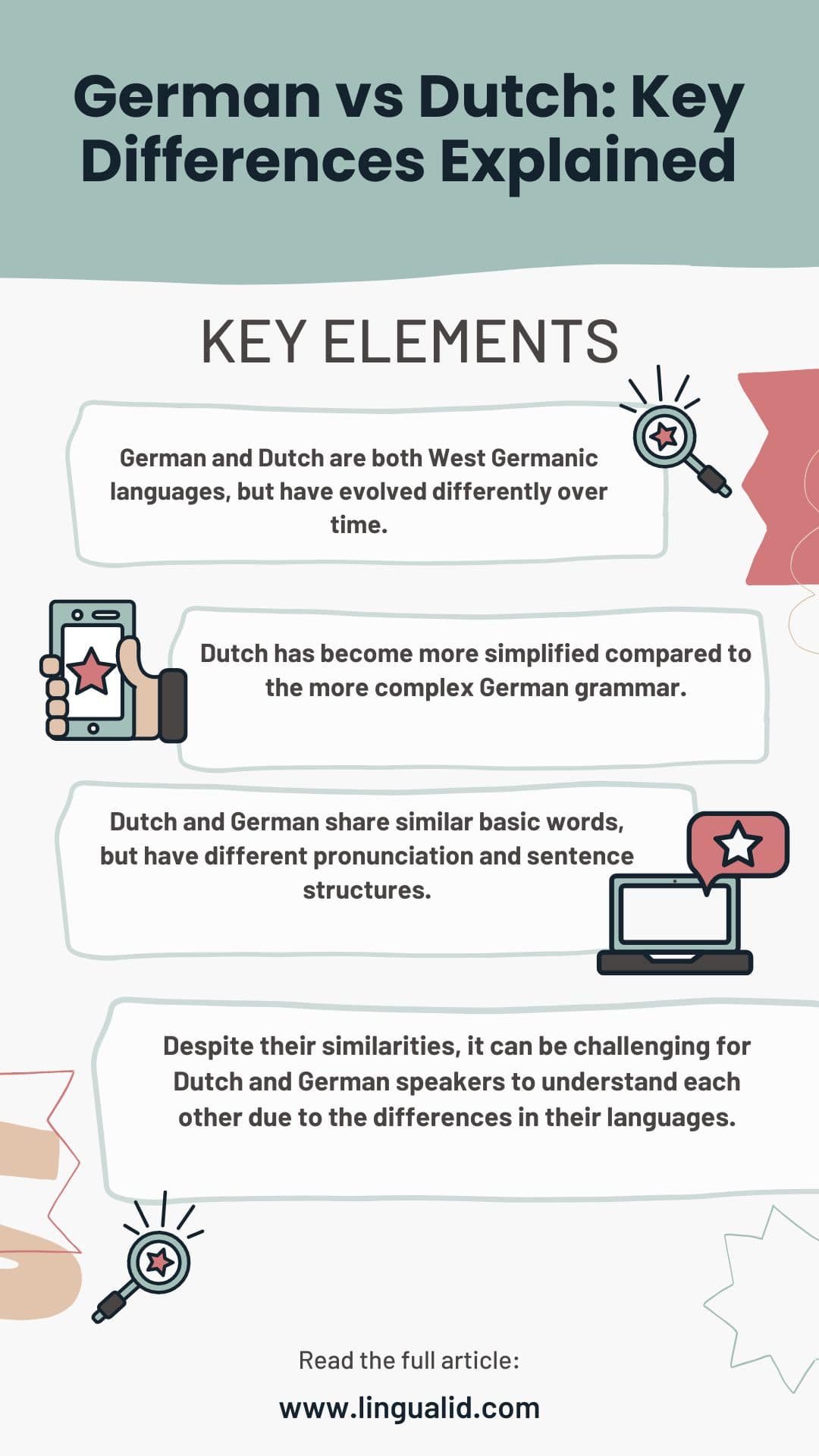
Conclusion
German and Dutch are similar but also different languages. They share many things but have their own unique traits. These differences make learning and using them interesting and sometimes challenging.
German and Dutch both come from the West Germanic language family. They have similar roots but have evolved differently over time. This means they have different words, ways of speaking, and cultural ways.
For those learning these languages, knowing the differences is key. It helps with understanding and communicating better. It also shows how each country has its own culture and way of life.
German and Dutch share some words and grammar rules. But, they also have their own ways of spelling and speaking. These differences can make learning them harder but also more rewarding.
Looking at their cultures, we see more differences. For example, how people talk, work, and eat can be quite different. These differences show the unique identities of Germany and the Netherlands.
In the end, comparing German and Dutch shows how rich and varied the Germanic languages are. It helps us understand and connect with the cultures of Germany and the Netherlands better. This knowledge is useful for anyone interested in languages, cultures, or the ties between these European countries.
FAQ
What are the key linguistic differences between German and Dutch?
German and Dutch are West Germanic languages that are similar but not the same. The High German Consonant Shift changed German but not Dutch.
How do the vocabularies of German and Dutch differ?
German and Dutch share many words, but English has more Latin words because of Latin’s influence. This makes English different from German and Dutch.
What are the main grammatical differences between German and Dutch?
German grammar is complex with four cases and three genders. Dutch grammar is simpler with fewer cases and easier verbs.
How do the spelling and pronunciation of German and Dutch words differ?
German has long words and umlauts. Dutch uses unique letter combinations and sounds differently. The “g” sound is pronounced differently in each language.
What are the key cultural differences between Germany and the Netherlands?
Both countries share cultural similarities but differ in communication. The Dutch are polite and indirect, while Germans speak more directly.
How do the work cultures in Germany and the Netherlands differ?
Germany values organization and efficiency at work. The Netherlands focuses on balancing work and life. They also accept delays more easily.
What are the main differences in punctuality norms between Germany and the Netherlands?
Germans stick to schedules strictly. The Dutch are more flexible with time and accept small delays.
How do the culinary traditions of Germany and the Netherlands differ?
German food is hearty. Dutch cuisine loves herring, cheese, stroopwafels, and frikadellen. Meal times and traditions also vary between the two.
Oualid Cheddadi is the founder of Lingualid, a platform that inspires independent language learners worldwide, regardless of the language they are learning. The name “Lingualid” is derived from the Portuguese word for “language,” “língua,” and the last three letters of Oualid’s name, “Lid.”

